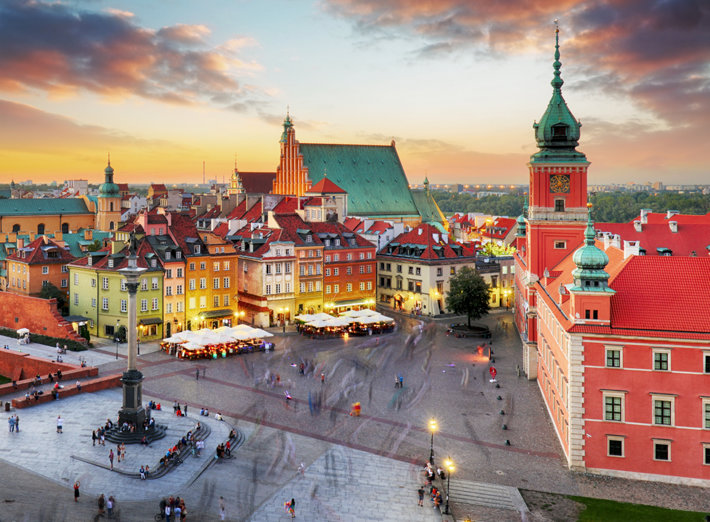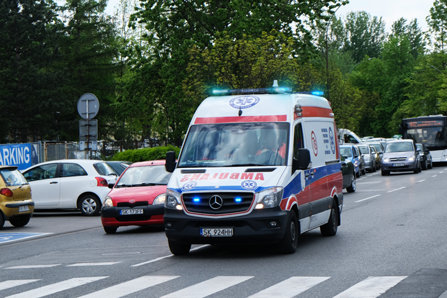What Is the Scope of Drug Addiction in Poland?

Polish health officials document the country’s substance abuse problem and any changes in that problem annually. While anyone can find the full assortment of data in the archives of public health institutions like the European Monitoring Centre for Drugs and Drug Addiction, this article offers a concise summary of the scope of drug addiction in Poland.
At a Glance—Key Factors and Relevant Drug Addiction Statistics
The following points provide a quick look at drug addiction, misuse, drug seizures, deaths, and other factors relating to drug use:
- According to the European Monitoring Centre for Drugs and Drug Addiction, about 10% of Polish young adults use cannabis. Cannabis is the most common drug of choice for young people, with 15% of young men ages 15 to 34 admitting to using it and 4% of young women ages 15 to 34 admitting to using it.
- There are approximately 14,664 opioid users in Poland, though the real number could be as high as 18,412.
- Between 250 and 300 people die from drug overdoses in Poland each year, or about one death for every 94,000 people living in the country.
- As drug use trends have changed in Poland, the country has seen a drop in HIV diagnoses attributed to injecting. That does not mean that IV drug use is becoming less common in Poland. Rather, addicts are finding other ways to use drugs, or they’re injecting drugs in a way that does not increase the risk of HIV transmission (using clean needles).
- For treatment center admissions, 28% of drug users enter treatment for cannabis, 24% for amphetamine, 2% for cocaine, 12% for heroin, and 34% for other, not always disclosed, drugs.
- Polish law enforcement organizations report more than 30,000 drug offenses each year, with the five top-ranking drugs seized during such offenses being herbal cannabis, cannabis resin, amphetamine, cocaine, and MDMA.
Drug Crime

Historically, the Polish criminal justice system sought to penalize drug offenders through incarceration. However, given that about 89% of reported drug offenses have to do with possession of drugs and only 11% of offenses have to do with supplying drugs, more recent changes in drug laws have sought to encourage criminal justice bodies to compel drug offenders to undergo drug treatment (as an alternative to incarceration).
Article 72 of the Act on Counteracting Drug Addiction allows criminal justice proceedings to be suspended while an offender seeks treatment, and Article 73(a) provides for breaks in an offender’s sentence while in treatment.
The trafficking of drugs into and through Poland is punished much more severely. Offenders can face up to 12 years in prison for trafficking substantial amounts of drugs.
Drug Use by Population
As touched on earlier, cannabis is the most common drug of choice in Poland (about 100,000 Polish residents use cannabis in a way that qualifies as “high risk”), followed by amphetamines, MDMA, ecstasy, and cocaine. Drug use is concentrated among younger people in Poland, with those residents ages 25 to 34 more likely to use drugs than older adults.
Drug use is becoming more common among young people. About one in ten Polish residents ages 15 to 34 reported using cannabis in the last year, an increase from previous years.
Alcohol Addiction is Also a Problem
Though the main body of drug-related reporting in Poland focuses on illicit drugs, alcohol is mentioned briefly. Alcohol deserves more than just a brief mention here, though, as alcohol abuse statistics in Poland far outmatch drug use statistics. For example, just among Polish students, almost 35% of students ages 15 to 16 report drinking to excess, with about 50% of that same age group admitting that they’ve consumed alcohol at least once before.
A large body of scientific data points to severe harm when young people consume alcohol, especially when they drink to excess. The National Institute on Alcohol Abuse and Alcoholism in the United States publishes a large amount of information on the risk factors present when young people consume alcohol.
Drug Deaths

In Poland, the Central Statistical Office collects data on drug deaths and submits it to the EMCDDA. According to their findings, Poland’s drug deaths are increasing, with about two-thirds of such deaths occurring among men. The age range of Polish drug users most likely to die from drug overdoses is 25 to 35.
About 9 Poles die of drug overdoses for every one million people who live there. This figure is well below the 20 deaths per million that is the European average, but of course any death from drugs is too much.
National Drug Prevention and Treatment Strategy
In 2016, Poland implemented a five-year plan for addressing the country’s drug problem. Called Poland’s National Health Programme, the Programme lists the main objectives:
- Prevention
- Treatment
- Rehabilitation
- Harm reduction
- Social reintegration
- Supply reduction
- International cooperation
- Research and monitoring
Poland spends approximately 25 to 35 million euros on this effort, an expenditure that represents about 0.01% of the country’s gross domestic product.
In any given year, thousands of Polish residents will enter treatment for drug use. Unfortunately, most of these individuals who enter treatment do not enter treatment for the first time. For example, of the 1,052 Polish residents who entered treatment for heroin addiction in 2015, only 119 were first-time entrants.
This suggests ineffective treatment modalities being used to help Polish addicts. It’s indicative of a lack of effective treatment methods.
Addiction Treatment—Overcoming Drug Abuse in Poland
Residential drug rehab programs provide a clear path to overcoming addiction for good. Such programs offer assistance in withdrawing off of drugs, as well as the behavioral assistance, life skills training, therapies, and other tools necessary to organize one’s life in such a way that drug use does not ever need to be a part of that person’s life again.
If you know someone in Poland who is struggling with an addiction to drugs (or if you are struggling with drug use), please reach out to a qualified residential treatment center today. Please do not wait until it is too late.
Sources:
- https://www.emcdda.europa.eu/system/files/publications/4509/TD0116917ENN.pdf_en
- https://pubs.niaaa.nih.gov/publications/AA67/AA67.htm

